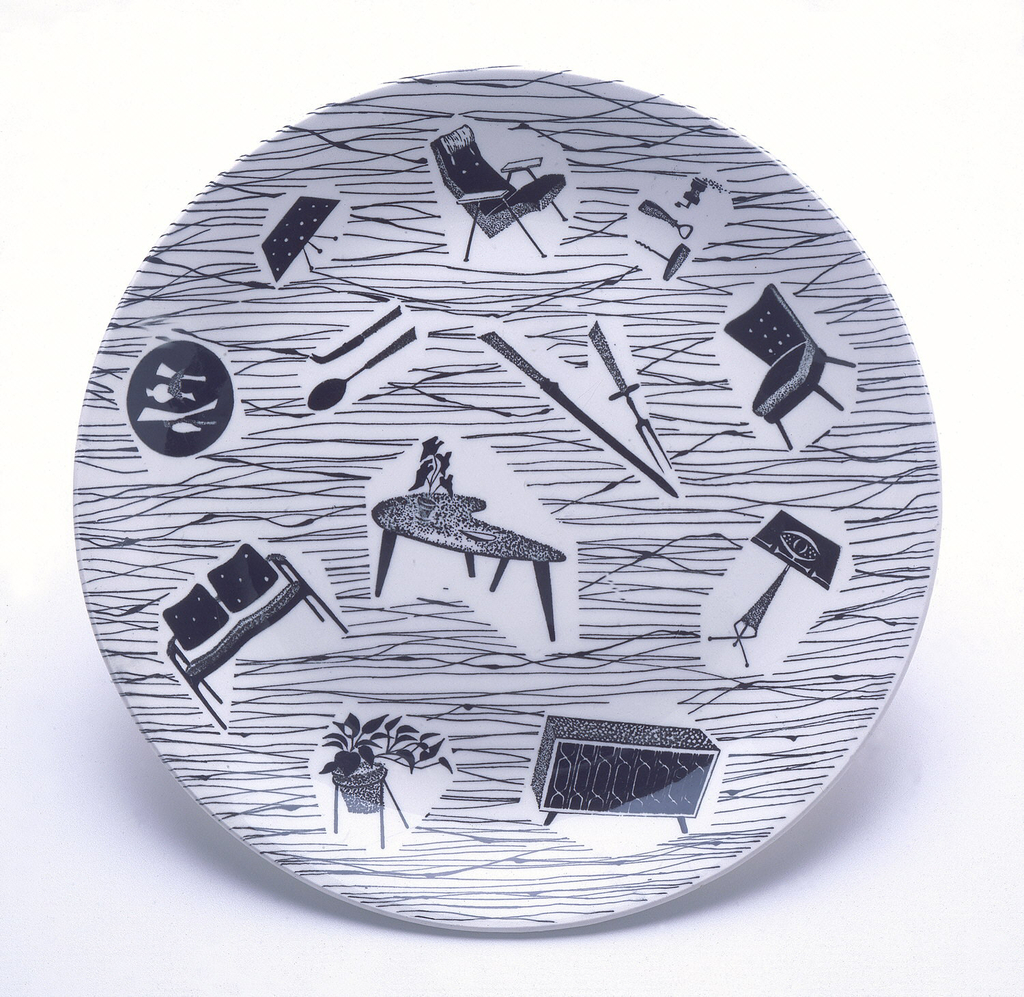After World War II, design boomed in Europe. Colors were brighter, lines more dynamic and materials more industrial—affordable modernism emerged to feed thriving consumers in the 1950s. The now iconic Homemaker tableware line started as a challenge for young English designer Enid Seeney. She was tasked with creating an “all-over” pattern for fashionable rimless plates. She transformed the simple plate form into a self-referential tribute to design itself. In the collection of a museum devoted solely to design, this plate is truly “meta.”
Drawn in jagged flux with pen and ink, the plate depicts the contents of a design savvy 1950s home shaken out and flying across a sea of twisting lines. Plants, furniture, kitchen tools, cutlery and even another plate are suspended in Seeney’s field of black and white. These objects are not inventions of her imagination, however. They are based on the real objects that made up design culture in the 1950s. Present are Robin Day’s Reclining chair and Sigvard Bernadotte’s Two-Seater sofa. Objects similar to Gordon Russell’s Double Helix sideboard and Isamu Noguchi’s Boomerang coffee table are also discernable.
When Seeney first unveiled her design in 1956, it was viewed as too progressive for mass production and largely overlooked. Seeney refused to leave what she viewed as her best work behind. She and her co-workers expanded the line—then simply titled Furniture—to include cups and saucers, a teapot and a soup tureen. The set caught the eye of a buyer from Woolworth department stores who decided to take a chance on the untraditional tableware. Only four months later, unaware of the purchase, Seeney left Staffordshire and the design industry entirely to embrace married life.
She had no idea that her design had been mass-produced until she stumbled upon it at a Woolworth’s store. It bore the name of her new occupation: the Homemaker line. While she wasn’t credited for the design until it was acquired by museums, Seeney followed its exceptional 13-year production life and steady rise in popularity as affordable tableware with modern flair. Reinterpretations of the line appear regularly, but Homemaker is one of a kind. With it, Seeney managed to capture an era by combining the ephemeral with the concrete: by creating identity through objects.
Chelsea Butkowski is a summer 2014 Peter Krueger intern in the Cooper Hewitt’s Product Design and Decorative Arts Department. She studies art history and communication at SUNY Geneseo.
